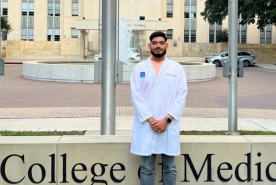People with simple kidney cysts have sacs that are filled with fluid within their kidneys. It is possible to have one or more cysts in one or both kidneys. The exact cause of simple kidney cysts is not known but they tend to be more common as people age. Simple kidney cysts rarely cause problems and are different from polycystic kidney disease, which tends to run in families and can be more serious.
In most cases, simple kidney cysts do not cause symptoms and usually do not require treatment. However, in some cases simple kidney cysts can grow large enough and cause a dull pain in a person's back, side or upper abdomen. These cysts can also get infected, causing pain, fever and tenderness. They can burst, also causing pain. Simple kidney cysts rarely harm kidneys or impair their ability to function.
Imaging tests that are used to diagnose simple kidney cysts include ultrasound, computerized tomography (CT) scan and magnetic resonance imaging (MRI). Blood and urine tests can also be done to determine if simple kidney cysts are impacting kidney function. If they are not causing any problems or symptoms, then your doctor may just monitor them periodically. If simple kidney cysts cause problems then surgery might be needed.
Simple kidney cysts that are causing symptoms or blocking the normal flow of blood or urine through the kidney may need to be treated using a procedure called sclerotherapy, where the cyst is punctured using a long needle, guided by ultrasound. The cyst is then drained and filled with an alcohol-containing solution to harden it. Sclerotherapies are typically done on an outpatient basis with a local anesthetic. If you have this procedure, you will not need to stay in a hospital overnight.
If the cyst is large enough, then a type of surgery known as a laparoscopy might be needed. These surgeries are done using a laparoscope, which is a tube with a small, lighted video camera at one end. This procedure is performed by a surgeon and requires general anesthesia. During this procedure, the cyst is drained and either removed or burned in order to prevent it from coming back. If you have this procedure you may need to remain in the hospital for one or two days.











